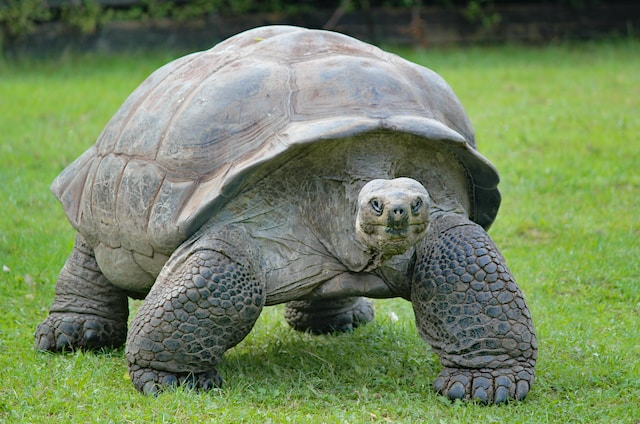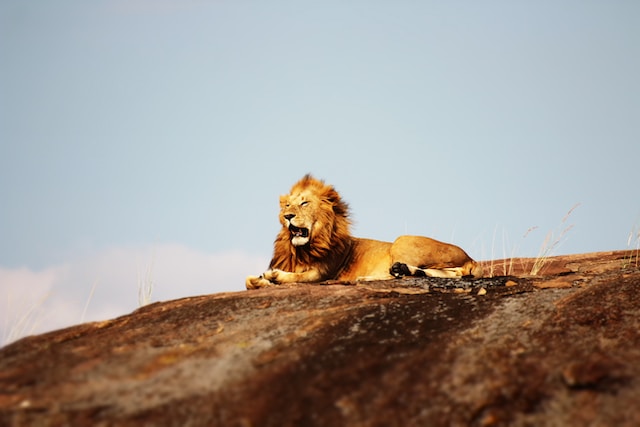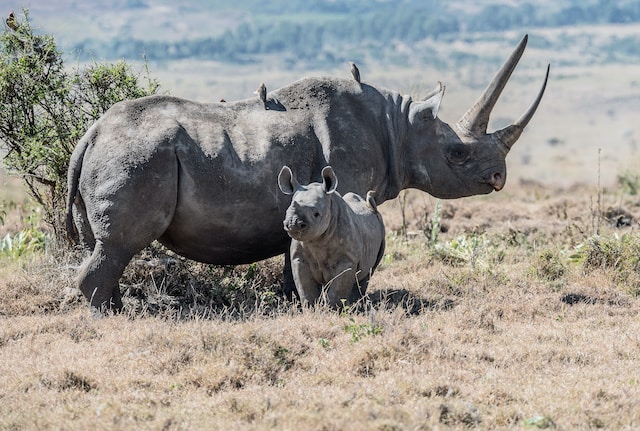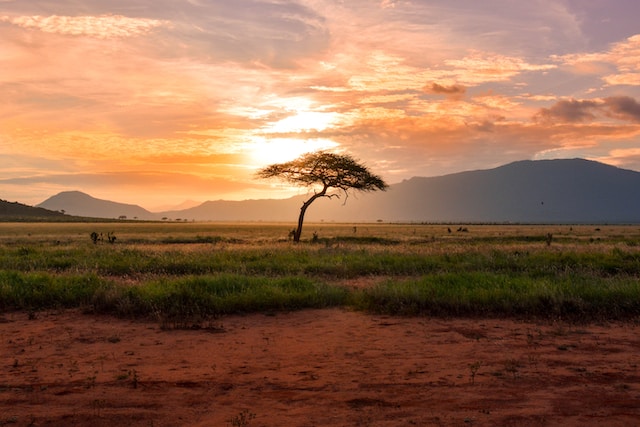One of the best ways to appreciate and preserve the natural beauty of Africa is by visiting ecofriendly destinations. Sustainable family adventures in Africa take you to some of the continent’s greenest destinations with a focus on conservation.
Some of these constitute the seven natural wonders of Africa while others are fairy tale-like island landscapes. Still others appear on UNESCO’s list of World Heritage Sites due to certain outstanding aspects.
They all have one thing in common. Volunteers have made deliberate efforts in these ecotourism spots to conserve natural ecosystems and diversity.
They offer a unique opportunity to introduce your children to sustainable tourism and make an indelible impression. Moreover, they have fun activities for every member of the family. Let’s get right into it.
Ecofriendly Family Adventures on African Islands
Ile aux Aigrettes Nature Reserve, Mauritius

Unlike mainland Mauritius, which is a volcanic island, Ile aux Aigrettes is a coral limestone island. Though it has no beaches, it is rich in lush forests and coastal vegetation. Its beauty however revolves around the conservation efforts made to reclaim this natural paradise. Back in the day, human activities took a toll on this gem, ridding it of most of its native fauna and flora. Following its declaration as a nature reserve in 1965, conservationists reintroduced rare, native animal species. They also toiled to restore the forest. As a result, the 27-hectare-island is now home to a thriving ecosystem.
60 native plants now grow here. In 1990, pink pigeons (endemic to Mauritius) were on the brink of extinction – there were only nine left. The population has since grown and is estimated at 400. Giant Aldabra tortoises, currently ranked as vulnerable, roam the island freely. These are among the world’s largest land tortoises which grow up to 150 years of age and can weigh up to 550 lbs (250kg).
A family eco tour of this island is an opportunity for children to learn firsthand about the importance of preserving natural ecosystems. The challenges and successes of this initiative will provide lifelong lessons on green practices.
North Island, Seychelles

Another beautiful destination for sustainable family adventures in Africa is the pristine private isle known as North Island. It is one of 42 inner islands on the Seychelles Archipelago, world-renowned for its matchless beauty and successful conservation story. Conservation efforts date back to 1981 when Marius Maier started by eradicating foreign plant and animal species. He then reintroduced indigenous species such as the coco de mer palm tree, Aldabra giant tortoises and birds.
Some of the rare birds here include the blue pigeon, moor hen and the Seychelles white-eye. You have an opportunity to see the critically endangered hawksbill turtles and endangered green turtles. This island hosts one of the hawksbill turtle’s most important nesting sites in Africa. It is also home to one of the species’ largest national populations worldwide.
One of the best ways to experience this green destination with kids is to volunteer in ongoing restoration efforts. Under the Noah’s Ark project, your family can participate in planting indigenous plants and removing coconut palm trees. Enjoy turtle patrol, fish identification while snorkeling and tracking the giant tortoises.
Green Family Vacations in Africa’s UNESCO Heritage Sites
Ngorongoro Conservation Area, Tanzania

Ngorongoro Conservation Area is one of the most unique destinations for sustainable family adventures in Africa. Established in 1959, it offers a glimpse into the harmony that can result when humans and animals learn to coexist. The area covers a vast region from Ngorongoro Crater to the Serengeti plains and all the way to the Great Rift Valley.
Ngorongoro Crater is the largest intact caldera in the world that is unflooded. It hosts a unique ecosystem in a small area with a surprisingly high density of wildlife. Some of the endangered species of Africa that live here include the black rhino, golden cat and wild hunting dog. Noteworthy natural attractions in the conservation area include the Great Wildebeest Migration and Olduvai Gorge. The Ngorongoro Crater and the Wildebeest Migration are among the seven natural wonders of Africa.
About 20,000 Maasai pastoralists use this land for grazing hundreds of thousands of cattle. This makes it a great place for an eco-friendly family safari with a cultural twist.
Lewa Wildlife Conservancy, Kenya

Lewa Conservancy stands out among sustainable destinations in Africa as one of the most successful conservation stories. Located on a 62,000 acre plot of land in Kenya’s Meru County, it initiated rhino conservation efforts in the 1980’s. But it wasn’t until 1995 that it became a wildlife sanctuary. Since then, it has taken incredible strides in the preservation of various iconic species of Africa.
Top among these is the critically endangered black rhino and the near threatened white rhino. Lewa currently has a population of 252 rhinos. 134 of these are black rhinos while the white rhinos account for the remaining 118. This is the highest number of rhinos in any safari park on the planet. The current number is also remarkable considering that the conservancy started out with a mere 15 of these gentle herbivores. Lewa is the only place on the planet where you can see the last two northern rhinos, a now-extinct species.
The world-renowned Lewa Safari Marathon offers one of the best sustainable family adventures in Africa. It is an opportunity for a family fun run on a trail through acacia woodland, savannah plains and along rivers. Since it is a challenging marathon in the wild, it is ideal for families with teenage kids or beyond.
Sustainable Family Adventures in Africa – on Nature Reserves
Abuko Nature Reserve, Gambia
Situated in western Gambia, Abuko is a relatively small wildlife sanctuary with heavy forest cover and a variety of species. It acquired protected status more than a century back, in 1916 and has been a nature reserve since 1968. Abuko is the perfect spot for a day trip, given its size (only about 106 hectares or two square kilometers). You do not need a car to explore this reserve – it has five kilometers (3.1 miles) of paths.
A paradise for bird watchers, it has about 250 avian species on record. These include the oriole warbler, ahanta Francolin and African goshawks. It is also home to the endangered western red colobus monkeys. About 130 of them live here. Some of the reptiles that live in Abuko include Nile crocodiles, green mambas, puff adders, spitting and forest cobras and pythons.
NamibRand Nature Reserve, Namibia
NamibRand Nature Reserve is globally recognized as one of the most accessible International Dark Sky Reserves on the planet. It was the first dark sky spot in Africa to get Gold accolade and the second in the whole world. But aside from being a dream destination for stargazers, it is an area of unique ecology and diverse wildlife species. The non-profit reserve sits in the southwestern part of the Namib Desert and has been in existence since the early ‘80’s. It has a focus on low-impact tourism – ideal for sustainable adventure seekers.
Decades ago, landowners in the area agreed to set the land aside for conservation. Large scale hunting and unsustainable cattle and sheep farming had damaged the fragile ecosystem. In the years since, they sought to rehabilitate it and re-establish the ecosystem. They cleared non-indigenous animals, removed fences and environmental waste. As the region recovered, wildlife gradually reappeared and stabilized.
Currently, it boasts stable populations of endangered endemic cheetah species, red hartebeest and leopards. Endangered birds that call this park home include Ludwig’s bustard, the lappet-faced vulture and the dune lark. The latter is the only true endemic bird of Namibia, often seen running up and down desert dunes.
Enjoy nature walks along well-marked paths or explore the dunes on a quadbike trail. Show your kids the marvels of the night sky in the reserve’s unspoiled night skies.
Make Your Mark by Not Leaving a Footprint
These are some of the exceptional ecotourism destinations in the world where you can make a mark by not leaving your footprint. By minimizing any negative impact on the environment, we will have the privilege of preserving the best of nature’s gifts in optimum condition. Adopt sustainability best practices and teach your children the same for the best sustainable family adventures in Africa.

